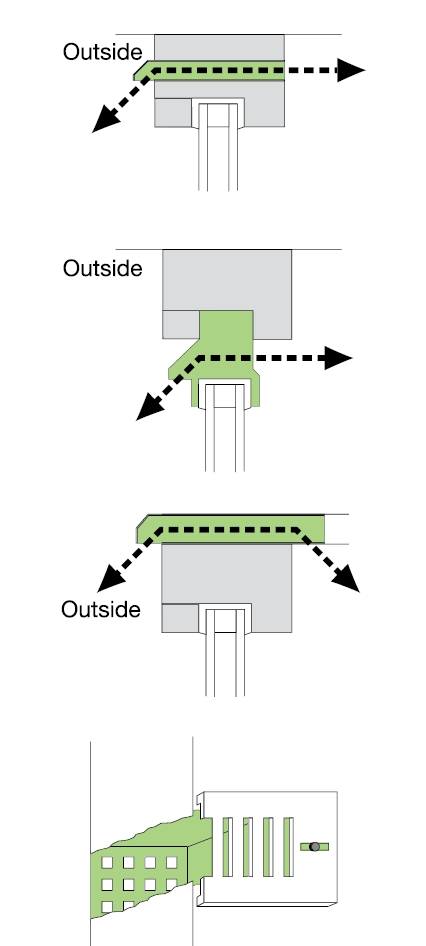Whole building ventilation
Approved document F, Ventilation, suggests that ‘whole building ventilation’, or ‘general ventilation is:
‘…nominally continuous ventilation of rooms or spaces at a relatively low rate to dilute and remove pollutants and water vapour not removed by the operation of extract ventilation, purge ventilation or infiltration, as well as supplying outdoor air into the building. For an individual dwelling this is referred to as ‘whole dwelling ventilation’.’
Where:
- Extract ventilation is, ‘…. The removal of air directly from a space or spaces to the outside. Extract ventilation may be by natural means (e.g. by passive stack ventilation) or by mechanical means (e.g. by an extract fan or central system).’
- Purge ventilation is, ‘…manually controlled ventilation of rooms or spaces at a relatively high rate to rapidly dilute pollutants and/or water vapour. Purge ventilation may be provided by natural means (e.g. an openable window) or be mechanical means (e.g. a fan).’
- Infiltration is, ‘… the uncontrolled exchange of air between inside a buildings and outside through cracks, porosity and other unintentional openings in a building, caused by pressure difference effects of the wind and/or stack effect.
Whole building ventilation might be provided by background ventilators, as illustrated below.
[edit] Related articles on Designing Buildings
- Air conditioning.
- Air infiltration testing.
- Approved Document F.
- Background ventilator.
- Convection.
- Cross ventilation.
- Displacement ventilation.
- Domestic ventilation systems performance.
- Heat recovery ventilation.
- HVAC.
- Mechanical ventilation.
- Natural ventilation.
- Passive building design.
- Solar chimney.
- Stack effect.
- Ventilation.
- Ventilation and control of COVID-19 transmission.
Featured articles and news
RTPI leader to become new CIOB Chief Executive Officer
Dr Victoria Hills MRTPI, FICE to take over after Caroline Gumble’s departure.
Social and affordable housing, a long term plan for delivery
The “Delivering a Decade of Renewal for Social and Affordable Housing” strategy sets out future path.
A change to adoptive architecture
Effects of global weather warming on architectural detailing, material choice and human interaction.
The proposed publicly owned and backed subsidiary of Homes England, to facilitate new homes.
How big is the problem and what can we do to mitigate the effects?
Overheating guidance and tools for building designers
A number of cool guides to help with the heat.
The UK's Modern Industrial Strategy: A 10 year plan
Previous consultation criticism, current key elements and general support with some persisting reservations.
Building Safety Regulator reforms
New roles, new staff and a new fast track service pave the way for a single construction regulator.
Architectural Technologist CPDs and Communications
CIAT CPD… and how you can do it!
Cooling centres and cool spaces
Managing extreme heat in cities by directing the public to places for heat stress relief and water sources.
Winter gardens: A brief history and warm variations
Extending the season with glass in different forms and terms.
Restoring Great Yarmouth's Winter Gardens
Transforming one of the least sustainable constructions imaginable.
Construction Skills Mission Board launch sector drive
Newly formed government and industry collaboration set strategy for recruiting an additional 100,000 construction workers a year.
New Architects Code comes into effect in September 2025
ARB Architects Code of Conduct and Practice available with ongoing consultation regarding guidance.
Welsh Skills Body (Medr) launches ambitious plan
The new skills body brings together funding and regulation of tertiary education and research for the devolved nation.
Paul Gandy FCIOB announced as next CIOB President
Former Tilbury Douglas CEO takes helm.
UK Infrastructure: A 10 Year Strategy. In brief with reactions
With the National Infrastructure and Service Transformation Authority (NISTA).
























Comments
[edit] To make a comment about this article, or to suggest changes, click 'Add a comment' above. Separate your comments from any existing comments by inserting a horizontal line.